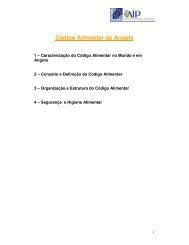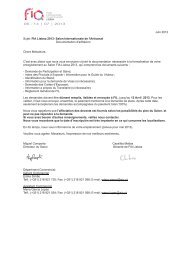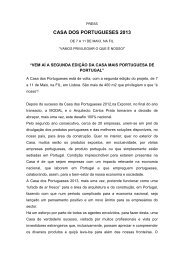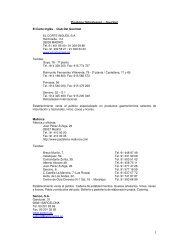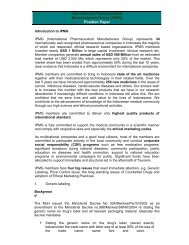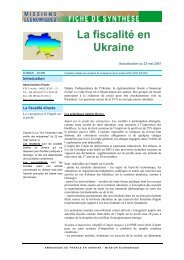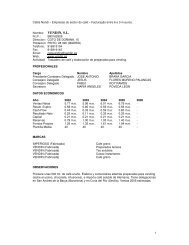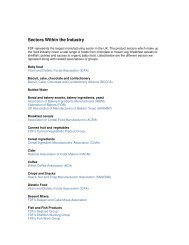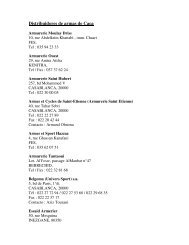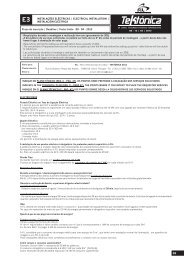Doing Business In (Insert Country Name Here)
Doing Business In (Insert Country Name Here)
Doing Business In (Insert Country Name Here)
You also want an ePaper? Increase the reach of your titles
YUMPU automatically turns print PDFs into web optimized ePapers that Google loves.
Although far behind petroleum and diamonds, seafood is one of Angola's top exports.Angola has approximately 1,600 kilometers of Atlantic coastline with several large portsand numerous rivers, giving it a rich variety in salt and freshwater fish. According to thegovernment, fish capture is expected to reach 369,515 tons in 2007. Of this amount,108,994 tons are deep sea capture, 257,869 tons are coastal capture, and 2,653 tonsare seafood. The fishing sector will need significant investment in the coming years forAngola to take advantage of its natural riches. <strong>In</strong> 2005, the Ministry of Fisheries andEnvironment announced a new rule requiring foreign companies wishing to fish inAngola to form joint ventures with companies owned by Angolans and to invest in localfish processing infrastructure. According to the Ministry $300 million is the investment for2007 funded by the Chinese EXIM Bank loan.Potential opportunities include rehabilitating the port of Namibe and its cold storagefacilities, establishing a distribution system for fishing equipment, constructing additionalcold storage facilities for fish distribution to the domestic market, and constructing aprocessing facility to produce canned fish.Timber:Angola has considerable timber resources. Valuable tree species, including mahogany,tola, mulberry, pine and eucalyptus can be found in the northern province of Cabinda inthe Maiombe forest. Timber production declined dramatically after independence in1975, from 285,000 cubic meters to below 20,000 cubic meters by 2004. The Angolangovernment is promoting timber production to supply local demand and the internationalmarket, and is investing in the technical and human resources and infrastructure neededto revitalize the sector. <strong>In</strong> spite of the low production in 2004, Cabinda was able tosupply 5,400 cubic meters of timber to the internal market and exported 9,553 cubicmeters to France, Morocco, Portugal and the United States. While Angola hasexpressed interest in becoming a signatory of the Convention on <strong>In</strong>ternational Trade inEndangered Species of Wild Fauna and Flora (CITES), no specific entry date has beenestablished.Return to table of contents2/13/2007



